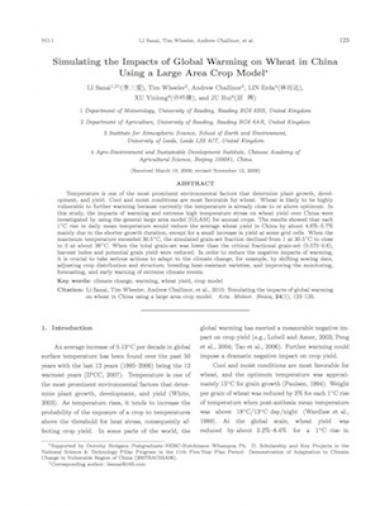Simulating the impacts of global warming on wheat in China using a large area crop model

Temperature is one of the most prominent environmental factors that determine plant growth, devel- opment, and yield. Cool and moist conditions are most favorable for wheat. Wheat is likely to be highly vulnerable to further warming because currently the temperature is already close to or above optimum. In this study, the impacts of warming and extreme high temperature stress on wheat yield over China were investigated by using the general large area model (GLAM) for annual crops. The results showed that each 1?C rise in daily mean temperature would reduce the average wheat yield in China by about 4.6%–5.7% mainly due to the shorter growth duration, except for a small increase in yield at some grid cells. When the maximum temperature exceeded 30.5?C, the simulated grain-set fraction declined from 1 at 30.5?C to close to 0 at about 36?C. When the total grain-set was lower than the critical fractional grain-set (0.575–0.6), harvest index and potential grain yield were reduced. In order to reduce the negative impacts of warming, it is crucial to take serious actions to adapt to the climate change, for example, by shifting sowing date, adjusting crop distribution and structure, breeding heat-resistant varieties, and improving the monitoring, forecasting, and early warning of extreme climate events.
Citation
Li S, Wheeler T, Challinor AJ, Erda L, Yinlong X, Hui J. 2010. Simulating the impacts of global warming on wheat in China using a large area crop model. Acta Meterologica Sinica 24(1): 123–135.